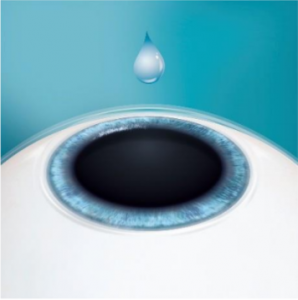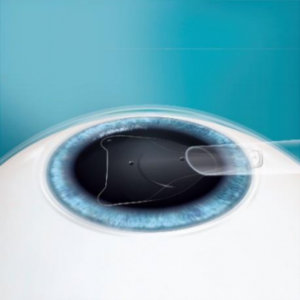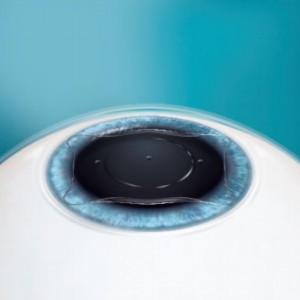EVO Visian ICL implant is one of the types of vision correction, this procedure is to be carried out without the aid of a laser.
Non-laser Vision correction
Lense Surgery EVO Visian ICL
The EVO Visian ICL is an eye-implantable lens that provides clear vision. Unlike the contact lens that is placed on the front surface of the eye, the EVO Visian ICL is implanted inside the eye between the iris (the colored part of the eye) and the natural lens of the eye, where it stays indefinitely. The Evo Visian ICL is made from collamer, which because of the constituent collagen is biocompatible with the eye (not seen as a foreign body in the eye) material and provides excellent quality of vision.
In Europe, the Visian ICL has been CE certified and it is in use since 1997. The clinical study results show a 99% patient satisfaction rate with the postoperative results.
EVO Visian ICL implantation is done in a sterile environment in outpatient settings and lasts for about 20-30 minutes. Before this manipulation, the eye is anesthetized using an anesthetic drug dripped on the cornea. If necessary, the doctor may recommend taking a sedative. There is no need for general anesthesia to perform vision correction surgery. At the periphery of the cornea, in the place where the white of the eye adjoins the colored part of the eye, a small 3 mm opening is incised through which a jelly-like substance is injected into the eye and the lens is inserted with a special injector. After the insertion, the lens gently unfolds in the eye and takes its original shape. At the end of the procedure, the jelly-like substance is washed out of the eye. That’s all! Stitches are not needed for wound closure – the opening will close itself in a short period of time.
In about 2-3 hours after the manipulation, the intraocular pressure is checked, the lens position is assessed through a biomicroscope and the patient can go home. Vision usually improves straight after the surgery; however, it completely stabilizes within 1 week. It is important not t is important not to schedule work that requires visual and physical effort on the first day after the procedure, nor drive a car, since the vision may still be unclear.

Anesthetic drops are applied to the eye before the procedure

An EVO Visian ICL lens is inserted into the eye through a 2 mm opening via an injector

Position of the EVO Visian ICL lens in the eye where it is fully open and in shape
- The operated eye shouldn’t be rubbed hard, accidentally injured;
- Avoid heavy physical load, prolonged situations with a bowed head;
- Don’t go to the sauna and swim with open eyes under water;
- To protect your eyes from the wind and dust, it is recommended to wear safety glasses or sunglasses;
- Be careful in contact with small children and animals as their movements can be unpredictable and can traumatize your eye;
- Use eye drops as prescribed by your doctor.
From the second day of the surgery, it is allowed to drive a car, do exercises, watch a computer and read with a limited load, which may be increased depending on how you feel.
If the post-operative regimen is followed and the doctor does not detect any discrepancies or abnormalities during the visit, the patient can return to normal, active life with virtually no restrictions. It is allowed to fly, climb mountains and dive under water. The only recommendation for daily routine is to follow r doctor’s routine preventive eye examinations. EVO Visian intraocular colomer lens is not feelable to the patient after implantation and is not visible externally.
The flexibility of the method of the vision correction in the future
Through the years the human body is aging and vision changes. Almost every person reaching a certain age faces signs of cataracts formation. As the previously performed vision correction procedure is reversible and the EVO Visian intraocular collamer lens does not change the structure of the eye, the eye surgeon may remove the inserted lens from the eye, while replacing the natural lens affected by the cataracts, as well as may perform another eye surgery the patient needs.
If a patient is considering vision correction with implantation of EVO Visian intraocular collamer lens, the opportunity of a free visit is offered in the clinic, during which the optometrist takes the necessary measurements to determine the suitability of the eye for the procedure. During this visit, the process of surgery is explained and the patient’s questions are answered. After the measurements, the patient is consulted by an eye surgeon explaining the results obtained and their compliance with the non-laser vision correction method.
